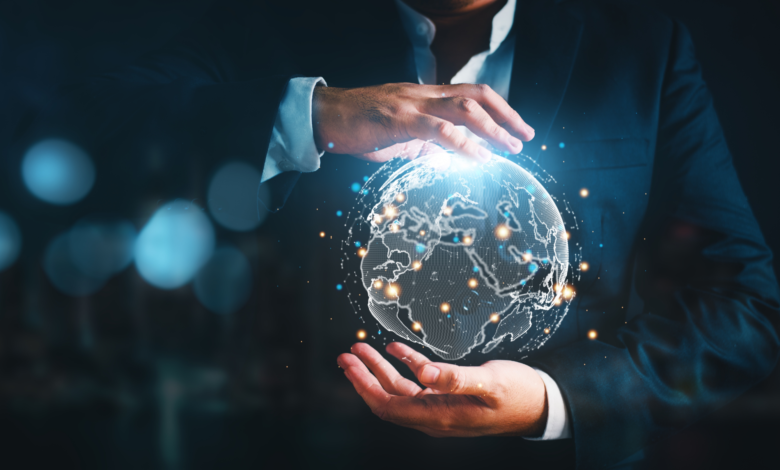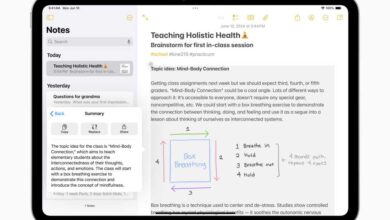Here’s How Generative Artificial Intelligence Can Help Deliver A Cleaner Future For Our Planet

Opinions expressed by Entrepreneur contributors are their own.
You’re reading Entrepreneur Middle East, an international franchise of Entrepreneur Media.
What is the cost of ignoring climate change? As extreme weather events become more common and ferocious each year, it’s becoming increasingly likely that global ecosystems and weather patterns may reach a tipping point sooner much sooner than expected. The impacts are now so severe that the World Economic Forum listed climate change and extreme weather as the biggest global risks we face in 2024.
While efforts to reduce carbon emissions and build more sustainable systems have been on the agenda for decades, change has been incremental at best. Yet, as the consequences of inaction can no longer be ignored, it’s clear that business sustainability is inextricably linked to environmental sustainability.
Amid this global mindset shift, demand for innovative solutions that can enact rapid, widespread change is at a peak. Here, generative artificial intelligence (GenAI) is quickly turning into one of the most promising solutions. While machine learning and AI are already being leveraged to tackle climate change, GenAI has made this technology even more competent and capable. For example, PwC is already conducting studies to explore GenAI’s potential to help reduce carbon emissions and deliver high-impact outcomes.
Let’s take a closer look at three ways that entrepreneurs can leverage GenAI to create a more sustainable future.
1. CLEANING UP DATA SWAMPS From tracking greenhouse gas emissions across complex supply chains, to optimizing energy use in sprawling urban centers, efforts to decrease carbon emissions is an extremely data-intensive task. While it’s true that technology is already being leveraged to track and analyze high-volume data sets, these models have their limitations. The linear form of the models means that insights delivered are fairly two-dimensional and require human input to form a data-driven strategy.
In contrast, GenAI has a phenomenal ability to contextualize data, taking something as vast as the entire internet, and using it to create meaningful, intelligent outputs. With GenAI, we have an incredible opportunity to clean up the vast data swamp of sustainability data, and forecast future trends and outcomes. The technology can run through millions of permutations of potential decarbonization levers to drive decision-making, and prioritize the most impactful changes.
The technology could, for example, be used to predict weather patterns with remarkable accuracy, adjusting grid operations to maximize the intake of renewable sources like wind and solar, while minimizing reliance on fossil fuels to help the energy sector transition away from fossil fuels at a much faster pace. This will help businesses and governments to anticipate environmental impacts and implement proactive, rather than reactive, sustainability strategies that could make net-zero emissions a reality.
Related: How Artificial Intelligence Can Be A Powerful Ally In Building Inclusive Workplaces
2. REBUILDING GLOBAL SUPPLY CHAINS In order to avoid a climate catastrophe, we need to drastically and rapidly reduce global carbon emissions. But this has to be a collective effort. It’s easy to feel frustrated when large corporations appear to be moving at a snail’s pace when rolling out sustainable new processes. But in reality, the interdependent nature of our global systems means that making drastic changes is highly complex. If these transitions aren’t managed carefully we could see another form of equally damaging destabilization occur.
While creating “green” offices is a more easily achievable goal, the majority of industrial emissions are created by supply chain processes. GenAI has the power to manage a smooth transition process that considers an endless number of moving parts across manufacturing, logistics, and operations. For example, GSK is already working with 160 of its most carbon-intensive suppliers to cut emissions from power, heat and transport and look at deforestation-free sourcing of materials. By leveraging GenAI these standalone examples can become a collective effort to increase the pace of change and find interdisciplinary solutions.
Further, the creation of new products from virgin materials is another emission hotspot, responsible for 22.8 billion tonnes of annual emissions. Transitioning from our legacy linear economy could cut emissions by 39%, but, to date, adopting a circular economy has proven elusive. GenAI can fuel this adoption by helping track and trace products, sort products efficiently, and reduce costs associated with this system. In short, it has the power to act as an intelligent, impartial co-pilot for our global supply chain to help us finally make the switch.
3. SELF-LED INNOVATION Beyond operational efficiencies, GenAI could also act as a catalyst for innovations and new sustainability initiatives. As mentioned, the biggest difference between GenAI and earlier models is its powerful ability to understand and apply context when performing tasks. To illustrate, ChatGPT v.1 and Sora are worlds apart in terms of what they’re capable of. What’s more, this rapid sophistication took little more than a year to achieve.
We can expect similar leaps forward if GenAI can train on rich and diverse sustainability datasets. For example, it could lead to a powerful simulational that helps to model new materials, processes, and technologies while assessing their impact before they are physically created. This will slash the time and resources that we currently spend on traditional development cycles, helping to design next-generation materials at a much lower cost and faster pace. In turn, this will have a trickle-down effect across all industries thanks to improvements in everything from biodegradable packaging to energy-efficient building materials.
MEETING THE 1.5°C LIMIT IN TIME
196 countries signed up to the Paris Agreement in 2015 in a historic moment of global collaboration. However, nearly a decade later, it’s very apparent that we’re not on track to meet targets.
The journey to net-zero emissions demands radical transformations in how we produce, consume, and live, but making these changes is proving highly complex.
GenAI is arguably one of the most sophisticated pieces of technology at our disposal. It can reshape how we approach carbon reduction on a global scale, and make the global temperature limit of 1.5°C within reach.



